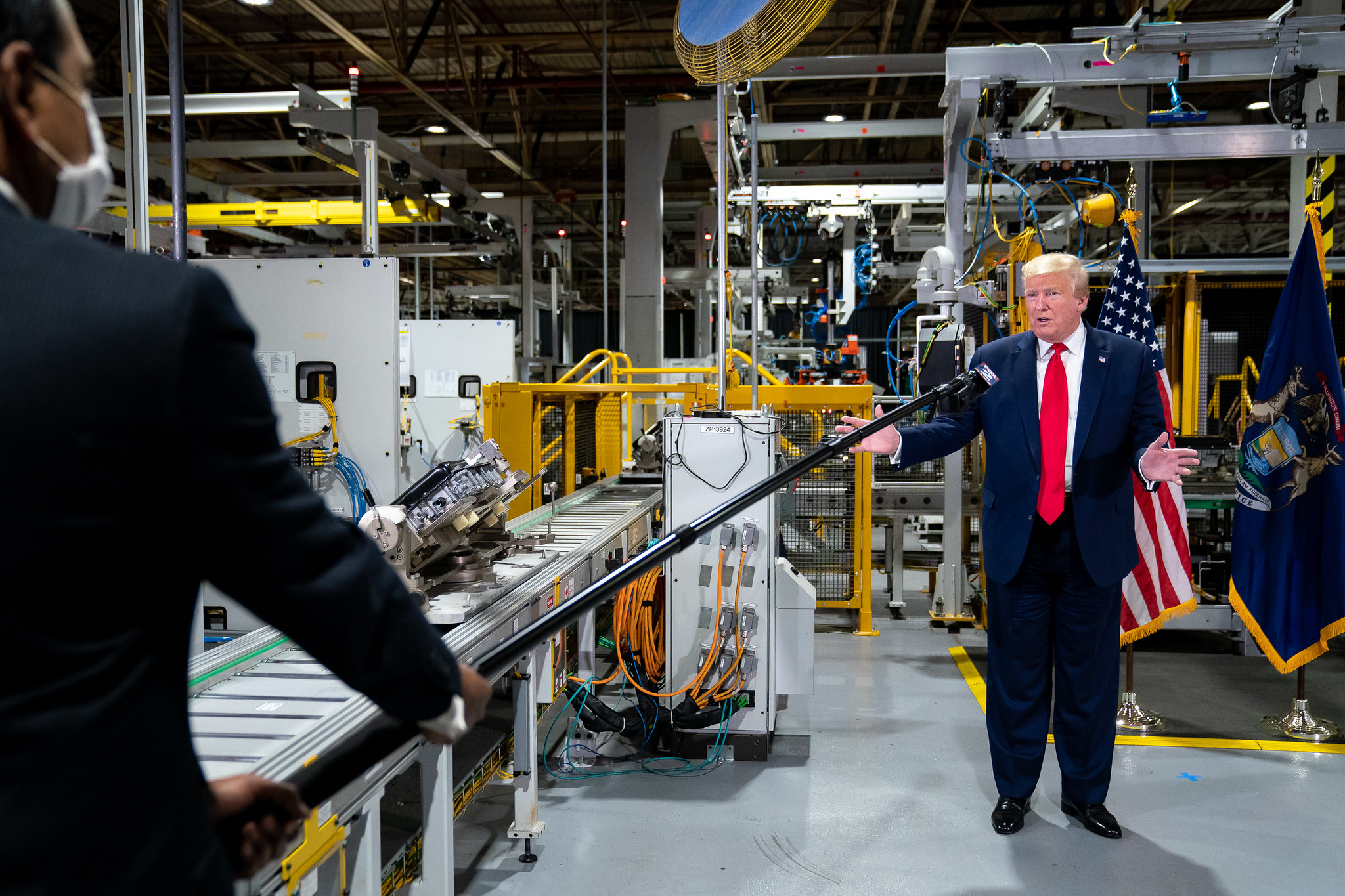It is not surprising that the Trump administration’s top economist promised this week that huge, historic gains in jobs and growth are coming in a few months. He is not alone. Even some Democratic economists think that economic growth and jobs could come roaring back before the November election. They are wrong. The truth is that the economy’s near-term path is bound up inextricably in how the pandemic continues to unfold. Economists have no expertise on that score; but we can gauge the scale of the damage already done, which tells us that a strong recovery later this year is not in the cards.
Economists know that any forecast is at best an educated guess based on extrapolating from what happened in the past. Economic predictions are only as plausible as the models on which they are based. Sad to say, the scenarios of an impending boom draw on the wrong models. Based on the pandemic’s known impact on businesses and employment over the last three months, a slow and irregular recovery is much more likely.
The happy forecasts assume that the closest parallel to this pandemic is an external shock to the economy, such as a major hurricane or flood. Normal economic activity stops and then restarts once the shock passes. Further, the recovery gets an additional boost from the need to rebuild whatever the natural disaster destroyed. This mindset assumes that the economy will bounce back as new infection rates recede and there’s a spurt of spending and business investments that the pandemic put on hold.
But this pandemic is nothing like a natural disaster in ways that matter economically. Terrible hurricanes or floods do not move the overall economy, because they are brief events that leave most of the country unaffected. The destructive force of the coronavirus has persisted over several months, badly damaging businesses and lives across every city and state. The result is that the economy that emerges from this pandemic will be structurally damaged.
We already know that the economy’s productive capacity will be significantly less than it was before the coronavirus outbreak—and this destructive process is ongoing. According to a J. P. Morgan Chase study, half of all smaller businesses across 12 industries lack the cash resources to survive for as long as 27 days without revenues. Real estate firms were best prepared, with half holding cash buffers that would cover 47 days. Professional and high-tech service firms, on average, can hold on for an average of 33 days. And half of all smaller companies in the construction, retail, and restaurant industries have the cash needed to stay solvent for only 16-20 days.
These statistics tells us that when the economy reopens, tens of thousands of companies will be gone, and millions more will be weakened. Moreover, the hundreds of thousands of companies that supply and service all the enterprises destroyed or damaged by the pandemic will also come out of this smaller than they were. Behind every restaurant, hotel, retail store, health club, concert hall, building contractor, and professional service company are a network of manufacturers, wholesalers, warehouses, cleaning and catering companies, legal and accounting firms, IT service companies and other contractors, that help keep them in business. If the companies they supply and service do not come roaring back this summer, neither will they.
Once the economy reopens, tens of thousands of other companies will also face hard times. Until a vaccine is widely available, millions of Americans will avoid air travel. That will squeeze hotels and restaurants in every city that draws tourism—from Orlando, New York, and Las Vegas, to Honolulu, Nashville, and Miami. Similarly, big crowds are unlikely to fill sports stadiums, concert halls, cineplexes, and shopping malls until everyone can be vaccinated. Enrollments at colleges and universities will likely be down. Many surviving retailers and eating and drinking establishments will have to limit their customer flows.
This is clearly not an economic environment that will support historic job gains. The pandemic thus far has cost 39 million Americans their jobs. In April alone, the Bureau of Labor Statistics (BLS) reported that 18 million Americans were furloughed, on top of the 15.9 million people counted as newly unemployed that month. In a normal business cycle, people on furlough soon return to their old jobs. But a pandemic is not a normal economic event. A new analysis from the University of Chicago’s Becker Friedman Institute for Economics estimates that 42 percent of the people recently furloughed will never get their old jobs back. The study further estimates that only 30 percent of those laid off will land new jobs later this year. If this analysis is anywhere near the mark, unemployment will be at least 15 percent going into the election.
Even this dispiriting view may be too optimistic. Extrapolation and economic modeling assume that most developments simply carry on. But we cannot assume that the recent declines in COVID-19 infections and deaths will persist once the economy reopens, especially without widespread testing and contact tracing. Already, many Americans in some states that are partially reopened have ignored the minimal precautions that virologists warn are vital to keep the infection and death rates falling, such as wearing masks and practicing social distancing. In fact, CDC data show that over the past two weeks, new cases increased in 17 states. Needless to say, any prospect of big gains in growth and jobs before November also will disappear entirely if a second wave of the pandemic emerges in autumn.
Yet even if most people take precautions and we are spared that second wave, the evidence does not support forecasts of outsized economic growth and job gains later this year. If President Trump bets his reelection on a historic recovery kicking in this summer, he should be prepared to relocate permanently to Mar-A-Lago.



